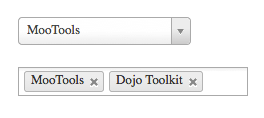How to Simulate Long HTTP Requests
It happens less frequently these days but there are times when we need to accommodate for a HTTP request timing out. The service could be down, under heavy traffic, or just poorly coded, or any host of other issues.
Whenever I need to simulate a long HTTP request, I use a bit of PHP to make it happen:
<?php
// Don't resolve this request for 5 seconds
sleep(5);
// A generic response
echo 'This is the response!';
// ... or hit a URL to make the case more realistic
echo file_get_contents('https://website.tld/endpoint');
?>
With that script created, I make PHP start a server so I can make the request locally:
php -S localhost:8000
Now I can hit http://localhost:8000 and get the long request I want!
There are a number of ways you can accomplish these long form requests but this has always been a favorite of mine!
![Create Namespaced Classes with MooTools]()
MooTools has always gotten a bit of grief for not inherently using and standardizing namespaced-based JavaScript classes like the Dojo Toolkit does. Many developers create their classes as globals which is generally frowned up. I mostly disagree with that stance, but each to their own. In any event...
![Creating Scrolling Parallax Effects with CSS]()
Introduction
For quite a long time now websites with the so called "parallax" effect have been really popular.
In case you have not heard of this effect, it basically includes different layers of images that are moving in different directions or with different speed. This leads to a...
![jQuery Chosen Plugin]()
Without a doubt, my least favorite form element is the SELECT element. The element is almost unstylable, looks different across platforms, has had inconsistent value access, and disaster that is the result of multiple=true is, well, a disaster. Needless to say, whenever a developer goes...
![HTML5 Placeholder Styling with CSS]()
Last week I showed you how you could style selected text with CSS. I've searched for more interesting CSS style properties and found another: INPUT placeholder styling. Let me show you how to style placeholder text within INPUTelements with some unique CSS code.
The CSS
Firefox...





That’s cool! Thanks for the tip.
I could see having it take a query param to set the sleep time arbitrarily for different scenarios you’re simulating.
Thanks David always love your content.
Although in this particular case i fail to understand a practical use, could you share an example?
thanks !
And here is concise way to do it in NodeJs, the server will wait for 3 seconds before response:
const http = require('http') const server = http.createServer((req, res) => { setTimeout(() => { res.writeHead(200) res.end('Hello, World!') }, 3000) }) server.listen(8080)